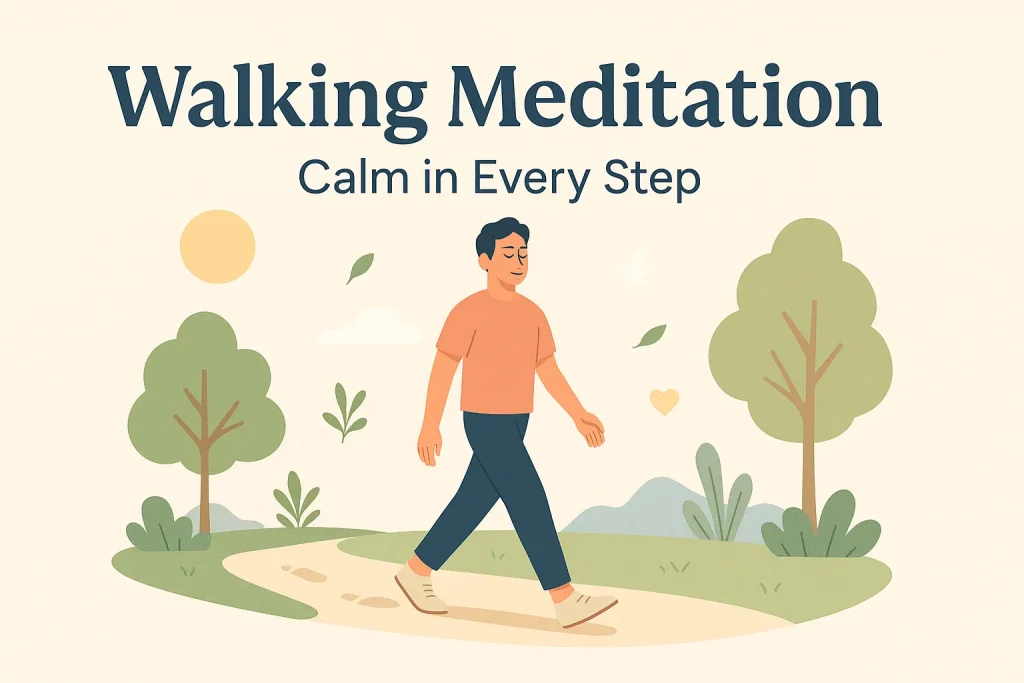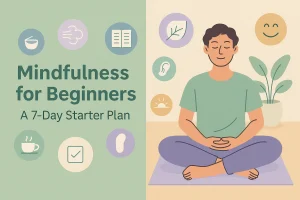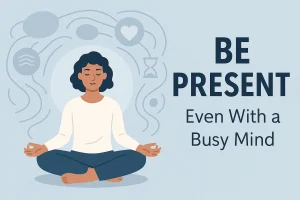Walking Meditation: How and Why to Try It

Think meditation means sitting still with your eyes closed? Think again.
Walking meditation is a powerful form of mindfulness that combines gentle movement with present-moment awareness. It’s perfect for people who find sitting meditation challenging—or just want to bring calm into everyday life.
In this article, you’ll learn how to practice walking meditation and discover the many walking meditation benefits for your mind and body.
What Is Walking Meditation?
Walking meditation is a mindfulness practice where you walk slowly and intentionally, focusing on your breath, steps, and surroundings.
It turns an ordinary activity into a grounding, calming ritual. You don’t need a cushion, silence, or a retreat. Just your feet—and awareness.
Walking Meditation Benefits
- Reduces anxiety and stress: Gentle movement + mindful breathing calm your nervous system
- Improves focus: Trains your brain to stay present
- Boosts mood: Helps release feel-good chemicals like serotonin and endorphins
- Supports physical health: Light movement improves circulation and posture
- Enhances creativity: A clear, calm mind is more open to ideas
How to Practice Walking Meditation (Step-by-Step)
1. Choose a Quiet Space
A park, backyard, hallway, or even your living room works. Just make sure it’s safe to walk slowly and uninterrupted.
2. Stand Still and Breathe
Begin by standing with your feet shoulder-width apart. Take 3 deep breaths. Ground yourself in the present moment.
3. Walk Slowly and Deliberately
Take slow, small steps. Feel each movement: heel, sole, toes. Walk in a straight line or a small loop.
4. Focus on One Anchor
You can choose to focus on:
- Your breath
- The sensation of your feet touching the ground
- The rhythm of your steps
5. Use All Your Senses
Notice the sights, sounds, smells, and air around you. Let them come and go without judgment.
6. If Your Mind Wanders…
Gently return to your feet, your breath, or your body. No guilt. This is the practice.
7. Close With Stillness
After 5–10 minutes, pause. Stand still. Take one final deep breath and thank yourself for showing up.
When to Practice Walking Meditation
- As a midday break to reset your mind
- Before or after work to transition your energy
- During high-stress moments when you feel overwhelmed
- After meals as a gentle digestive walk
Tips for Beginners
- Start with 5 minutes and build up gradually
- Use guided audio (Headspace, Calm, or Insight Timer)
- Combine with gratitude (silently name things you’re grateful for as you walk)
- Don’t worry about doing it “right”—just be present
Final Thoughts
Walking meditation benefits go beyond calm—they build awareness, resilience, and presence in motion. You don’t need a special place or a perfect mindset to begin. You just need to walk—and notice.
🌿 Try This:
Go for a 5-minute walk today. Leave your phone. Walk slowly. Breathe deeply. That’s mindfulness in motion.
Want More Mindfulness Tools?
Subscribe to our free newsletter for weekly guided practices, mental clarity prompts, and real-life ways to bring mindfulness into your day.




No comments yet. Be the first to comment!